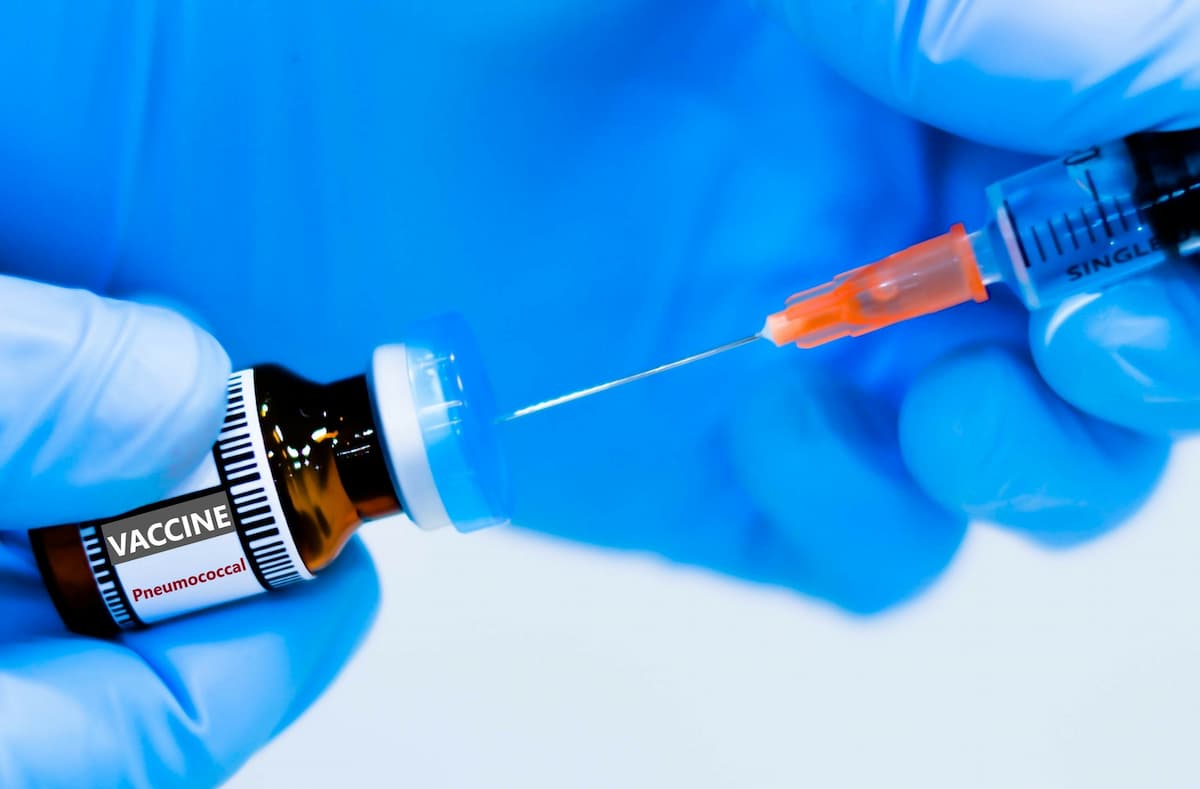News
Article
Childhood Pneumococcal Vaccination Programs Indirectly Protect Adults From Pneumococcal Disease
Author(s):
Key Takeaways
- Pediatric PCV programs reduce PD in children and unvaccinated adults through indirect protection, decreasing vaccine-type pneumococcal transmission.
- Studies show decreased vaccine-serotype IPD and pneumonia in adults, especially those with underlying conditions, post-PCV implementation.
Pneumococcal disease incidence decreased in adults after pneumococcal vaccines began to be used in children due to indirect protection, with fewer adults found to carry the bacterium that causes disease.
New research findings indicate that indirect protective effects against pneumococcal disease (PD), including invasive pneumococcal disease (IPD) and pneumonia, were found in both younger and older adults because of established pediatric pneumococcal conjugate vaccination (PCV) programs.1
Infant pneumococcal vaccination can make a meaningful impact in achieving herd immunity. | Image Credit: © kitsawet | stock.adobe.com

The development of pneumococcal vaccines has made a significant impact on reducing mortality from PD. Particularly, following the introduction of infant PCV immunization programs, the rates of vaccine-type PD was observed to substantially decrease due to vaccine-induced immunity. Correspondingly, the incidence of vaccine-serotype (VT) disease has decreased in unvaccinated adults.2
Because of the direct protection children gain from pneumococcal vaccination, indirect protection is gained in unvaccinated individuals. This is due in part to the reduced pathogen transmission within a community because of decreased carriage of vaccine-type pneumococcal bacteria in immunized children. Ultimately, this indirect protection leads to “herd immunity.”1,2
In this review, the study authors aimed to examine the real-world evidence of indirect protection of adults in countries with established pediatric pneumococcal vaccination programs. Through this, they sought to gain a better understanding of the factors that affect indirect protection, which can be valuable information for the development and implementation of future pneumococcal vaccines.1
Critically, most selected studies assessing nasopharyngeal carriage in adults indicated a decrease in the carriage of PCV VTs in adult populations or in adult members of households or communities with vaccinated infants following the implementation of infant vaccination, the investigators found.1
Regarding VT IPD in adults, decreases in the incidence of IPD cause by PCV7 serotypes in younger adults were observed post the implementation of PCV7 and PCV13 in the United States, which were some of the first pneumococcal vaccines approved for predominant use in infants. Most importantly, there was a decrease in VT IPD incidence in younger and older adults with underlying or high-risk conditions.1
Meaningful impacts on IPD morality were observed in the review. In the US, decreases in age-specific mortality rates were observed in adults 65 years or older during the 5 years following introduction of PCV7 into the infant vaccination program. However, following the introduction of PCV7, multiple studies found an increase in the incidence of IPD caused by non-vaccine serotypes (NVT) in both younger and older adults.1
Rates of pneumonia/community-acquired pneumonia-related hospital admissions decreased in younger adults following the implementation of the PCV13 immunization in the US. One study, which specifically analyzed the rate of hospital admissions for VT pneumococcal pneumonia in Pennsylvania, found a decrease in hospital admissions after the implementation of PCV7 infant immunizations.1,3
Some persistent VTs remain. Serotype 3, included in the PCV13 vaccine, has continued to cause disease in adults following the implementation of PCV13 in infants, particularly in adults 65 years and older. Most of the included studies documented indirect protection against all PCV13 serotypes—other than serotype 3—in adult populations.1
Multiple factors contribute to the complex phenomenon of indirect protection. One of the more important parameters discussed was time since introduction of the PCV to the infant vaccination program, since serotype replacement can potentially offset the benefits of both direct and indirect protection from PCV vaccination of infants. Additionally, host characteristics can affect the magnitude of observed impacts.1
“Greater insights on the impact of these parameters on indirect protection would help to inform future vaccine development,” the study authors discussed. “In addition, prioritizing the monitoring of the indirect effects of childhood PCV immunization programs on unvaccinated populations will be essential to inform control strategies against pneumococcal disease and the need for vaccination in aging and at-risk adults.”1
REFERENCES
1. Flem E, Mouawad C, Palmu AA, et al. Indirect protection in adults ≥ 18 years of age from pediatric pneumococcal vaccination: A review. Expert Review of Vaccines 2024;23(1):997-1010. doi:10.1080/14760584.2024.2416229
2. Gierke R, Wodi AP, Kobayashi M, et al Chapter 17: pneumococcal disease. In: Hall E, Wodi A Hamborsky J, et al, Epidemiology and prevention of vaccine-preventable diseases. Washington, D.C: Public Health Foundation; 2021. https://www.cdc.gov/pinkbook/hcp/table-of-contents/chapter-17-pneumococcal-disease.html?CDC_AAref_Val=https://www.cdc.gov/vaccines/pubs/pinkbook/pneumo.html
3. Metlay JP, Fishman NO, Joffe M, et al. Impact of pediatric vaccination with pneumococcal conjugate vaccine on the risk of bacteremic pneumococcal pneumonia in adults. Vaccine. 2006;24(4):468-475. doi:10.1016/j.vaccine.2005.07.095
Newsletter
Stay informed on drug updates, treatment guidelines, and pharmacy practice trends—subscribe to Pharmacy Times for weekly clinical insights.






